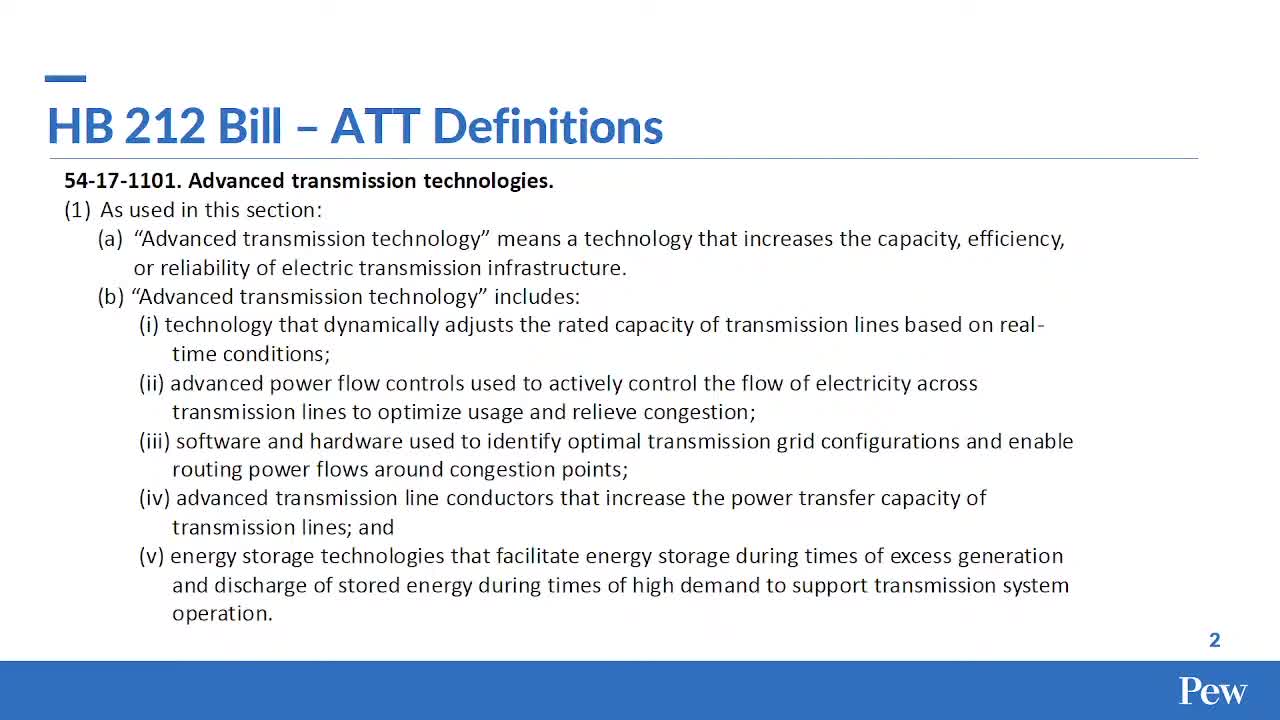Utah Utilities Embrace Advanced Transmission Technologies Under HB 212 for Quick Capacity Boost
July 16, 2025 | Utah Public Service Commission, Utah Subcommittees, Commissions and Task Forces, Utah Legislative Branch, Utah
Thanks to Excel Chiropractic and Scribe from Workplace AI , all articles about Utah are free for you to enjoy throughout 2025!

This article was created by AI using a video recording of the meeting. It summarizes the key points discussed, but for full details and context, please refer to the video of the full meeting. Link to Full Meeting
Key discussions highlighted the importance of ATTs in addressing several critical issues, including increasing transmission capacity, reducing system congestion, and enhancing reliability. The bill encourages the deployment of these technologies during Integrated Resource Planning (IRP) processes, allowing utilities to recover deployment costs if deemed prudent by the commission.
Julie Seltier, a leader in the grid-enhancing technologies sector, emphasized that the current grid operates below its potential capacity. She likened the grid to a highway with unused lanes, indicating that advanced technologies could unlock significant additional capacity. The meeting underscored the urgency of adopting these technologies due to projected load growth and the increasing number of interconnection requests from new energy generation sources.
Three primary technologies were discussed: advanced power flow control, dynamic line ratings, and topology optimization. Advanced power flow control devices can adjust the effective resistance of transmission lines, allowing for better power distribution. Dynamic line ratings utilize sensors to measure real-time conditions, enabling utilities to optimize the capacity of existing lines based on environmental factors. Topology optimization software analyzes grid configurations to find the most efficient power flow, potentially increasing capacity without the need for new infrastructure.
The meeting concluded with a strong call for utilities to embrace these technologies, which not only promise to enhance grid reliability and efficiency but also offer a cost-effective alternative to traditional infrastructure upgrades. As the demand for energy continues to rise, the implementation of ATTs could play a crucial role in ensuring a resilient and efficient power grid for Utah and beyond.
Converted from Technical Briefing by Pew Charitable Trust (25-999-01) meeting on July 16, 2025
Link to Full Meeting
Comments
View full meeting
This article is based on a recent meeting—watch the full video and explore the complete transcript for deeper insights into the discussion.
View full meeting

